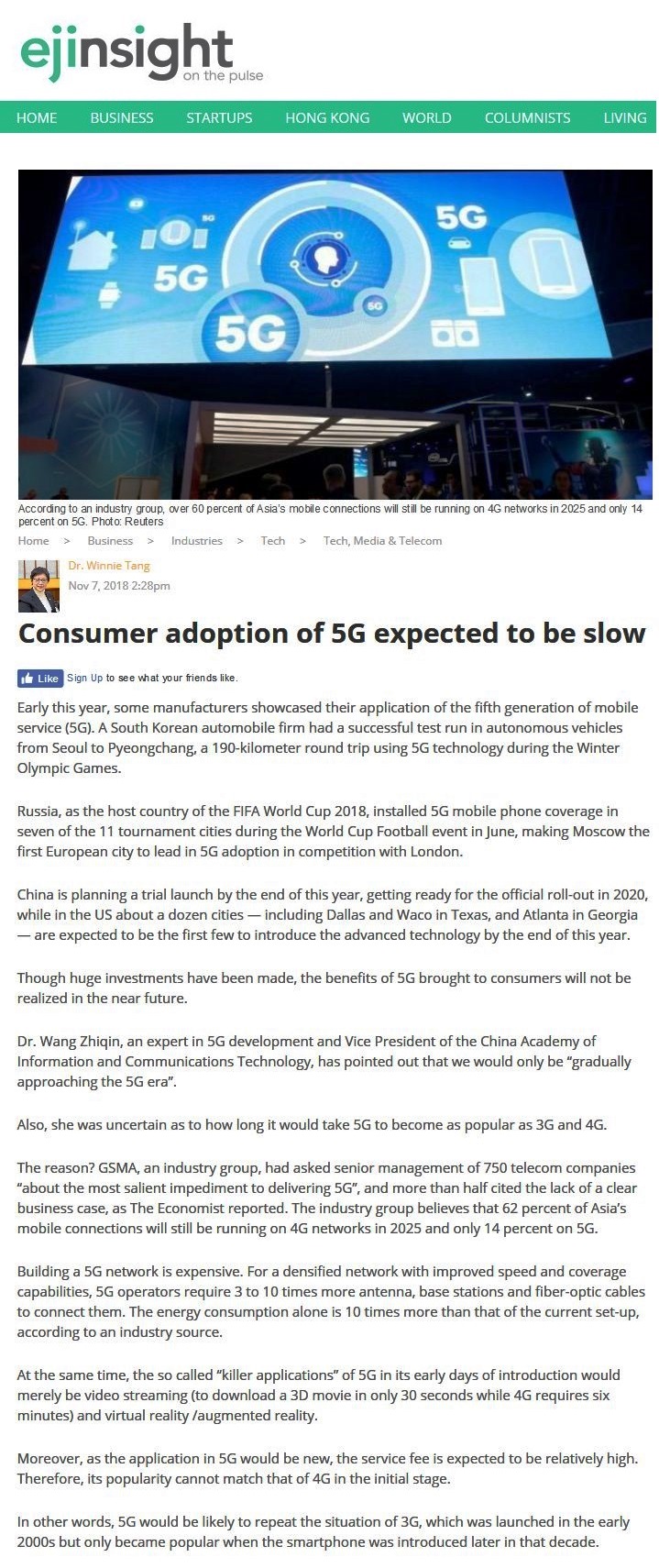網上版請按此

Consumer adoption of 5G expected to be slow
Early this year, some manufacturers showcased their application of the fifth generation of mobile service (5G). A South Korean automobile firm had a successful test run in autonomous vehicles from Seoul to Pyeongchang, a 190-kilometer round trip using 5G technology during the Winter Olympic Games.
Russia, as the host country of the FIFA World Cup 2018, installed 5G mobile phone coverage in seven of the 11 tournament cities during the World Cup Football event in June, making Moscow the first European city to lead in 5G adoption in competition with London.
China is planning a trial launch by the end of this year, getting ready for the official roll-out in 2020, while in the US about a dozen cities — including Dallas and Waco in Texas, and Atlanta in Georgia — are expected to be the first few to introduce the advanced technology by the end of this year.
Though huge investments have been made, the benefits of 5G brought to consumers will not be realized in the near future.
Dr. Wang Zhiqin, an expert in 5G development and Vice President of the China Academy of Information and Communications Technology, has pointed out that we would only be "gradually approaching the 5G era".
Also, she was uncertain as to how long it would take 5G to become as popular as 3G and 4G.
The reason? GSMA, an industry group, had asked senior management of 750 telecom companies "about the most salient impediment to delivering 5G", and more than half cited the lack of a clear business case, as The Economist reported. The industry group believes that 62 percent of Asia's mobile connections will still be running on 4G networks in 2025 and only 14 percent on 5G.
Building a 5G network is expensive. For a densified network with improved speed and coverage capabilities, 5G operators require 3 to 10 times more antenna, base stations and fiber-optic cables to connect them. The energy consumption alone is 10 times more than that of the current set-up, according to an industry source.
At the same time, the so called "killer applications" of 5G in its early days of introduction would merely be video streaming (to download a 3D movie in only 30 seconds while 4G requires six minutes) and virtual reality /augmented reality.
Moreover, as the application in 5G would be new, the service fee is expected to be relatively high. Therefore, its popularity cannot match that of 4G in the initial stage.
In other words, 5G would be likely to repeat the situation of 3G, which was launched in the early 2000s but only became popular when the smartphone was introduced later in that decade.
Dr. Winnie Tang
Honorary Professor, Department of Computer Science, The University of Hong Kong